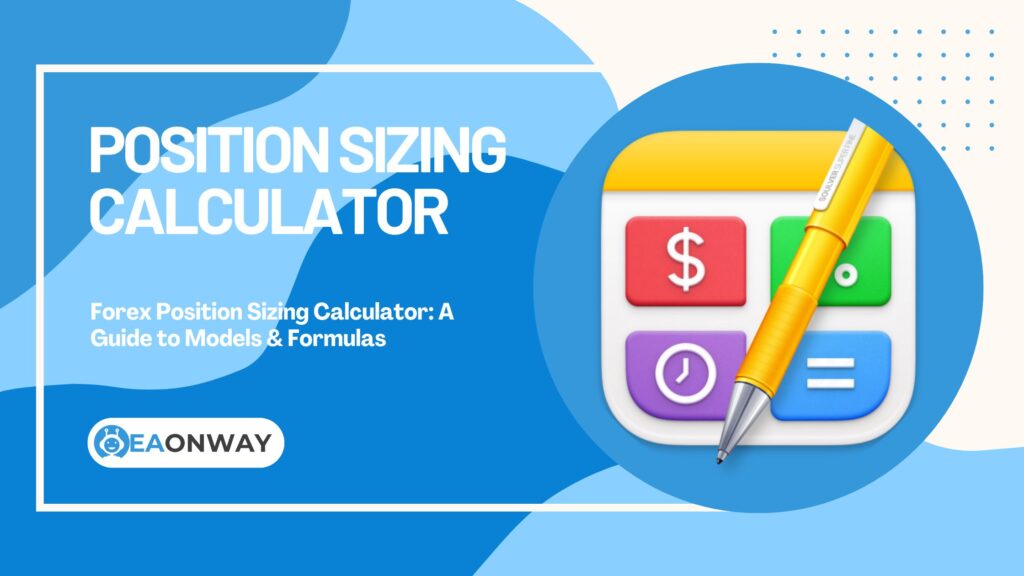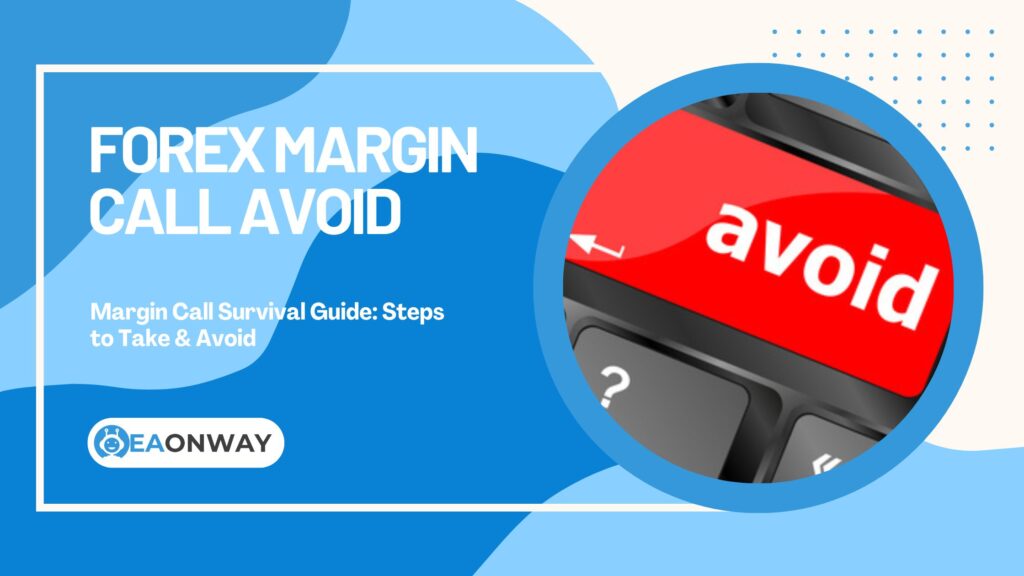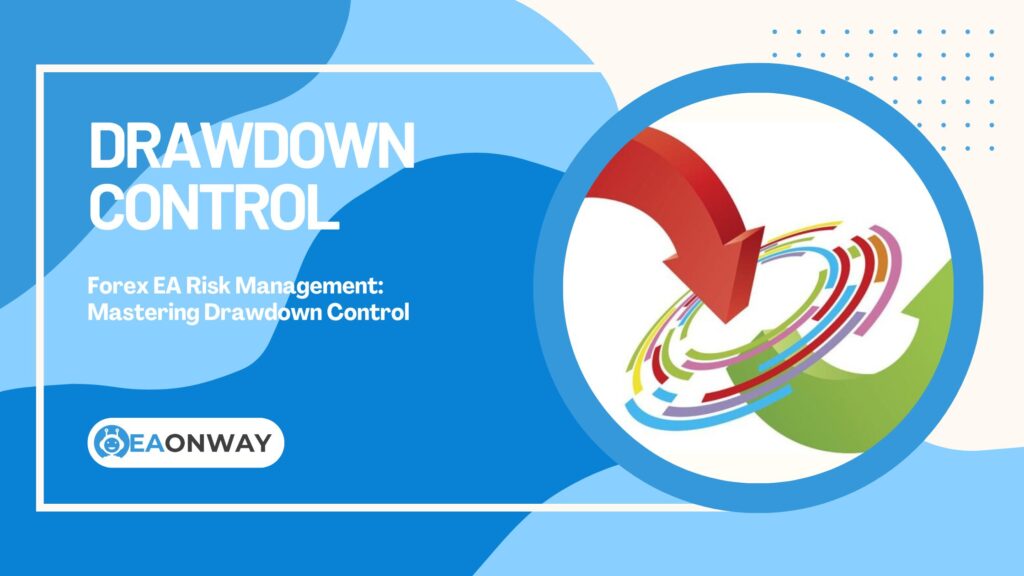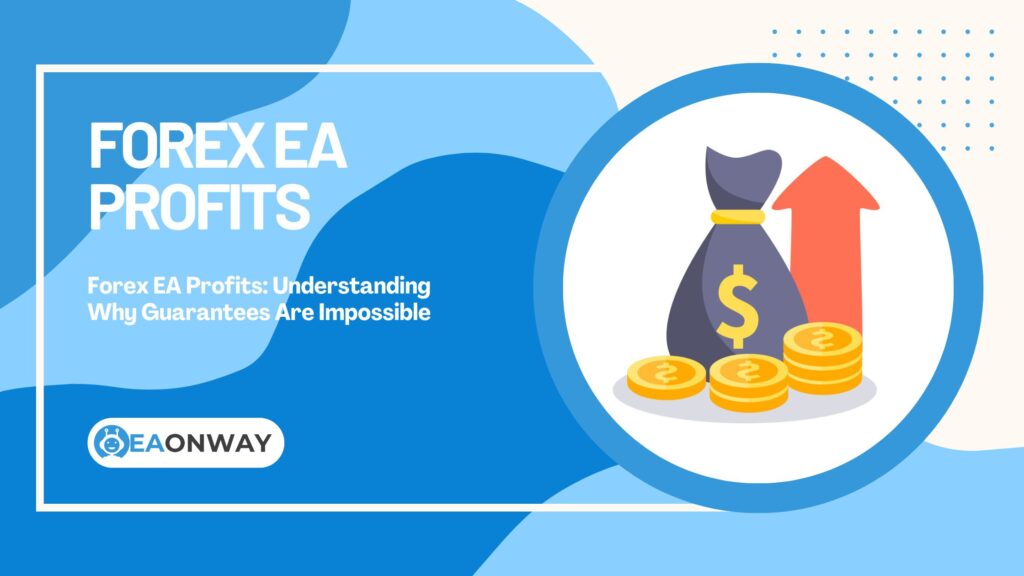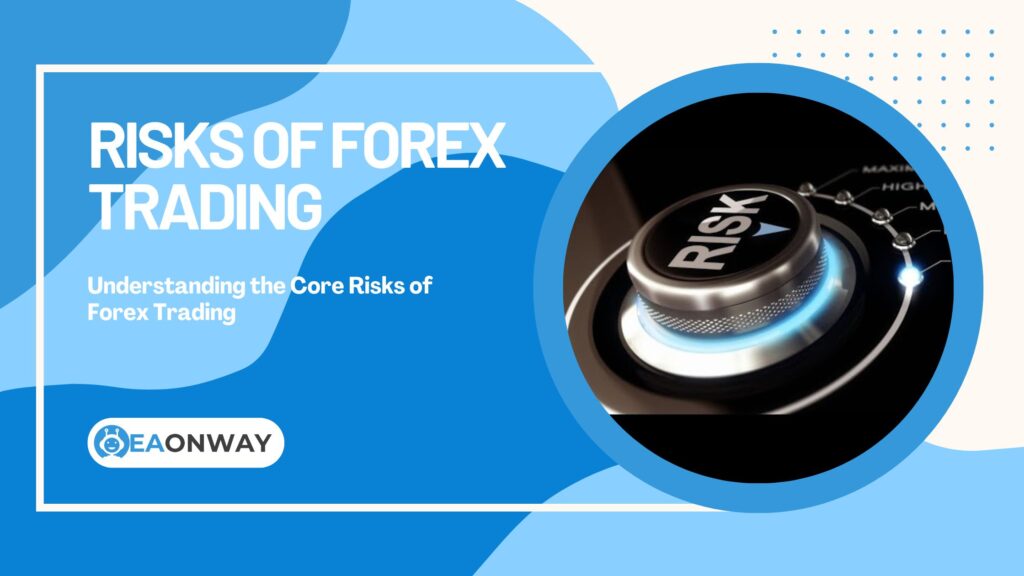Calculate Forex Leverage: Your True Exposure And Risk
Calculating Forex leverage accurately isn’t just a technical exercise; it’s a fundamental skill crucial for every trader because it directly determines your true market exposure and the inherent risk in every single trade you make. Do you truly understand how much you’re risking when your broker proudly displays “leverage up to 500:1”? The answer is paramount to navigating the complexities of the foreign exchange market and, more importantly, to preserving your trading capital. Misunderstanding or mismanaging leverage is a primary culprit behind significant trading account losses. This comprehensive article delves deep into Forex leverage, moving beyond simplistic definitions. We aim to equip you with the knowledge to precisely calculate your leverage, understand your actual exposure, identify the often-underestimated risks, and make more informed decisions. This piece expands significantly on the leverage concepts introduced in our broader pillar page, “Understanding the Core Risks of Forex Trading,” by focusing on the practical calculations and nuanced implications for your trading.
By the end of this guide, you’ll grasp not only what Forex leverage is but also how to perform essential Forex leverage calculations, define and quantify your true exposure, recognize the critical interplay with margin, and ultimately, manage the amplified risks that leverage invariably introduces. This understanding is vital whether you trade manually or use automated solutions like Expert Advisors (EAs).
Key Takeaways: Mastering Leverage and Exposure
Here’s a quick summary of the critical points you need to remember about Forex leverage, true exposure, and risk:
- Leverage Amplifies Outcomes: Forex leverage magnifies both potential profits and, more critically, potential losses. Understanding precisely how to calculate leverage used is vital for risk assessment.
- True Exposure vs. Margin: Your true market exposure is the total notional value of your open positions, not merely the margin deposited. Losses are calculated based on this full value.
- Nominal vs. Effective Leverage: The broker’s maximum offered leverage (nominal) can be misleading. Effective leverage (or actual leverage forex), which is Total Position Value / Account Equity, is a far more accurate indicator of your current risk.
- Margin is Collateral: Margin is the good faith deposit required to open and maintain a leveraged trade. It’s inversely related to leverage – higher leverage means a lower percentage margin requirement. A clear margin calculation guide is essential.
- Calculation is Key: Mastering how to calculate Forex leverage, true exposure, and margin requirements (including used margin and free margin) is fundamental to effective risk management and avoiding detrimental margin calls.
- Over-Leveraging is Perilous: Using excessive effective leverage is one of the fastest ways traders can deplete their accounts. The allure of controlling large positions with small capital often masks the severe underlying risk.
- Impact on EAs: Leverage significantly affects the risk profile of Forex Expert Advisors. Ensure any EA’s position sizing and risk settings are compatible with your account’s leverage and your personal risk tolerance.
Demystifying Forex Leverage: Beyond the Broker’s Offer
Leverage in Forex trading is a powerful tool, often marketed as a primary benefit. However, without a crystal-clear understanding of its mechanics, it can become a trader’s worst enemy. Let’s break down what it truly means.
What Exactly is Forex Leverage and How Does It Work?
Forex leverage is essentially a loan facility provided by your Forex broker, enabling you to control a significantly larger position in the currency market than your own trading capital would otherwise permit. It works by amplifying your trading power, allowing you to open substantial trades with a relatively small amount of money in your account.
For instance, if your broker offers 100:1 leverage, it means that for every $1 of your own capital, you can control $100 in the Forex market. If you have $1,000 in your trading account, 100:1 leverage allows you to command a position size of $100,000. Brokers offer leverage to make Forex trading accessible to individuals with smaller capital amounts and to enable them to take positions of meaningful size. While this can magnify potential profits from favorable price movements, it’s crucial to remember—and we cannot stress this enough—that it equally magnifies potential losses from adverse movements. This magnification effect makes your account highly sensitive to even minor fluctuations in currency prices, underscoring the importance of understanding leverage risk examples.
Understanding Nominal Leverage vs. Effective (Actual) Leverage
Nominal leverage is the maximum leverage ratio offered by your broker, such as 50:1, 200:1, or even 1000:1 in some regions. However, effective leverage (also known as actual leverage forex) is the ratio of the total notional value of all your open positions to your account equity. This figure reflects your true, current risk exposure at any given moment.
It’s vital to distinguish between these two because the nominal leverage offered by your broker can be misleading if you don’t use it all. For example, your broker might offer 500:1 leverage. If you have $10,000 in account equity and you open a position with a notional value of $20,000 (e.g., 0.2 standard lots of EUR/USD), your effective leverage is calculated as:
- Effective Leverage Formula: Total Notional Value of Open Positions / Account Equity
- In this case: $20,000 / $10,000 = 2:1
Even though your broker offers 500:1, your actual leverage on this trade is only 2:1. Focusing on and managing your effective leverage gives a much more realistic picture of the risk you are undertaking with your trading capital. The maximum leverage offered by a broker is a ceiling, not a target.
How is the Forex Leverage Ratio Typically Expressed?
The Forex leverage ratio is almost universally expressed as a ratio like X:1. Common examples include 50:1, 100:1, 200:1, or 500:1. This notation signifies that for every single unit of your own capital (the “1” in the ratio), you can control “X” units of currency in the market.
For instance:
- 50:1 leverage: For every $1 you have, you can control $50.
- 200:1 leverage: For every $1 you have, you can control $200.
A higher ratio implies greater borrowing power and the ability to open larger positions with the same amount of initial capital. Consequently, it also means your exposure to market movements is amplified to a greater degree, leading to increased potential for both profits and, crucially, losses. Regulatory bodies in different jurisdictions often impose caps on the maximum leverage brokers can offer to retail clients to mitigate these risks. For example, the European Securities and Markets Authority (ESMA) has set leverage limits for retail clients ranging from 30:1 to 2:1, depending on the volatility of the underlying asset (Source: European Supervisory Authorities, 2018).
The Core Calculation: How To Calculate Forex Leverage and True Exposure
Understanding the theory is one thing; applying it through calculation is where practical risk management begins. Let’s get into the specifics of how to calculate forex leverage and determine your real market footprint.
What is the Formula to Calculate Forex Leverage Used on a Trade?
To calculate the actual leverage utilized on a specific trade, you divide the total notional value of that position by the margin required by your broker to open and maintain that trade. The formula is:
Actual Leverage on Trade = Total Notional Value of Position / Margin Used for that Position
Let’s break this down with an example:
- Trade Details: You want to trade 1 standard lot of EUR/USD. The contract size for a standard lot is 100,000 units of the base currency (EUR in this case).
- Notional Value: If EUR/USD is trading at 1.0800, the notional value in USD is 100,000 EUR * 1.0800 = $108,000. (For simplicity, many just use the base currency units: 100,000 EUR).
- Broker’s Maximum Leverage & Margin Requirement: Your broker offers 100:1 nominal leverage. This typically translates to a margin requirement of 1% (since Margin % = 1 / Leverage Ratio; so 1/100 = 0.01 or 1%).
- Margin Used: The margin required for this 100,000 EUR position is 100,000 EUR * 1% = 1,000 EUR. (If your account is in USD, this 1,000 EUR would be converted to USD at the current EUR/USD rate, say 1,000 * 1.0800 = $1,080 margin).
- Calculate Actual Leverage on Trade:
- Using EUR values: 100,000 EUR (Notional Value) / 1,000 EUR (Margin Used) = 100:1.
- In this specific case, the actual leverage used on the trade matches the broker’s maximum leverage because the position size chosen fully utilized the margin benefit of that leverage. If you had chosen a smaller position with the same 100:1 account leverage, the margin used would be less, and the effective leverage for your overall account equity might be lower, as discussed earlier.
This forex leverage calculation helps you see the real gearing on each specific trade.
How Do You Calculate Your True Exposure in Forex?
Your true exposure in Forex is the total notional value of all your currently open positions. This figure represents the full market value of the currencies you are controlling, not just the sum of the margins you have deposited to open those trades.
Why is this distinction critical? Because your profits and losses are calculated based on this full notional value, your true exposure. For example, if you have $5,000 in your account and you’ve used margin to open positions with a combined notional value of $200,000, your true exposure is $200,000. A mere 1% adverse movement in the market on that $200,000 exposure translates to a $2,000 loss. If you were only thinking about your $5,000 account balance, or the smaller margin figure, you might severely underestimate the speed at which losses can accrue. The “True exposure formula Forex” traders should always keep in mind is simply the sum of all their positions’ notional values.
Calculating Notional Value: The Foundation of Exposure
The notional value of a Forex trade is the total underlying value of the currency being traded. It’s calculated by multiplying the trade size (in lots) by the contract size per lot.
- Formula: Notional Value = Trade Size (in Lots) × Contract Size per Lot
Forex contract sizes are standardized:
- Standard Lot: 100,000 units of the base currency
- Mini Lot: 10,000 units of the base currency
- Micro Lot: 1,000 units of the base currency
Example:
You decide to trade 0.5 lots of GBP/USD.
- Trade Size = 0.5 lots
- Contract Size (for a standard lot) = 100,000 GBP
- Notional Value = 0.5 × 100,000 GBP = 50,000 GBP.
If your trading account is denominated in USD, you would typically convert this notional value to USD using the current GBP/USD exchange rate to understand its value in your account currency. For instance, if GBP/USD is 1.2500, then 50,000 GBP is equivalent to 50,000 * 1.2500 = $62,500. This $62,500 is your actual risk in Forex trading for this position, before considering margin.
Margin and Leverage: A Critical Interplay
Margin and leverage are two sides of the same coin in Forex trading. Understanding their relationship is essential for managing your account effectively and avoiding nasty surprises. This section serves as a practical margin calculation guide.
What is Margin in Forex and How Does It Relate to Leverage?
Margin in Forex is the amount of money you must have in your trading account to open and maintain a leveraged trading position. It’s crucial to understand that margin is not a transaction fee or cost; rather, it’s a good faith deposit, or collateral, that your broker holds while your trade is open. This deposit ensures you can cover potential losses.
The relationship between margin and leverage is inverse:
- Higher Leverage = Lower Margin Requirement (as a percentage)
- Lower Leverage = Higher Margin Requirement (as a percentage)
The margin requirement is typically expressed as a percentage of the total notional value of the position. This percentage is directly derived from your broker’s leverage offering:
- Margin Percentage = 1 / Leverage Ratio
- For 50:1 leverage, Margin % = 1/50 = 0.02 = 2%
- For 100:1 leverage, Margin % = 1/100 = 0.01 = 1%
- For 500:1 leverage, Margin % = 1/500 = 0.002 = 0.2%
So, if you’re using 100:1 leverage, you need to provide 1% of the trade’s notional value as margin.
How Do You Perform a Margin Calculation? A Step-by-Step Guide
To calculate the specific amount of margin required for a trade, you multiply the notional value of your intended position by the margin percentage dictated by your broker’s leverage for that instrument. Here’s a step-by-step margin calculation guide:
- Determine Your Trade Size (in Lots): Example: You want to trade 0.2 lots of USD/JPY.
- Identify the Contract Size per Lot: For most currency pairs, a standard lot is 100,000 units of the base currency. In USD/JPY, the base currency is USD.
- Calculate the Notional Value of the Position:
- Notional Value = Trade Size × Contract Size
- Notional Value = 0.2 lots × 100,000 USD/lot = 20,000 USD.
- Ascertain Your Broker’s Margin Requirement (Percentage): Let’s assume your broker offers 200:1 leverage for USD/JPY.
- Margin Percentage = 1 / 200 = 0.005 or 0.5%.
- Calculate the Margin Required:
- Margin Required = Notional Value × Margin Percentage
- Margin Required = 20,000 USD × 0.005 = 100 USD.
So, you would need $100 of margin in your account to open this $20,000 USD/JPY position.
- Consider Account Currency Conversion (If Necessary): If the base currency of the pair you’re trading is different from your account’s denomination currency, the margin calculated in the base currency will need to be converted to your account currency at the prevailing exchange rate. In our USD/JPY example with a USD account, no conversion is needed. However, if you traded 0.2 lots of EUR/USD from a USD account, the notional value would be 20,000 EUR. If the margin was 100 EUR, this would be converted to USD.
What are Used Margin, Free Margin, and Equity in a Leveraged Account?
Monitoring these three key figures in your trading platform is essential for understanding your account’s health and capacity for further trading or absorbing losses:
Equity: This is the real-time value of your trading account. It’s calculated as:
Equity = Account Balance + Floating (Unrealized) Profits/Losses from all open positions.
Equity fluctuates as the market prices of your open positions change.Used Margin: This is the total amount of your equity that is currently locked up as collateral for all your open positions. It’s the sum of the margin required for each individual trade you have active.
Used Margin = Sum of (Margin for Trade 1 + Margin for Trade 2 + … + Margin for Trade N).Free Margin: This is the amount of equity in your account that is still available to open new positions or to absorb losses from existing positions before a margin call is triggered.
Free Margin = Equity – Used Margin.
Understanding these components of margin trading exposure helps you manage your risk effectively. If your Free Margin approaches zero, you are at high risk of a margin call.
What is a Margin Call Level and How is It Calculated?
A margin call level is a specific percentage threshold set by your broker. If your account’s “Margin Level” (a different metric from Free Margin) drops to this predetermined threshold, your broker will issue a margin call. This is a demand for you to either deposit more funds into your account or close some losing positions to increase your Margin Level back above the required minimum.
The Margin Level itself is calculated as:
Margin Level (%) = (Equity / Used Margin) × 100%
Example:
- Your Equity is $1,500.
- Your Used Margin for open positions is $1,000.
- Your Margin Level = ($1,500 / $1,000) × 100% = 150%.
If your broker’s margin call level is, for instance, 100%, you are currently safe. However, if your open positions move against you and your Equity drops to $1,000 (while Used Margin remains $1,000), your Margin Level becomes ($1,000 / $1,000) × 100% = 100%. At this point, a margin call is triggered.
Many brokers also have a Stop-Out Level, which is typically a lower percentage than the margin call level (e.g., 50%). If your Margin Level falls to the stop-out level, the broker will start automatically closing your open positions (usually starting with the largest losing ones) to prevent your account balance from going negative. ESMA regulations, for instance, mandate a per-position stop-out at 50% of the minimum required initial margin for retail clients (Source: FCA rules on CFDs). This margin call level calculation is critical for traders to monitor.
The Amplified Dangers: Understanding Leverage Risk Examples
The allure of high leverage is strong, but its dangers are equally potent. Concrete leverage risk examples can vividly illustrate how quickly things can go wrong if leverage is misunderstood or misused.
How Does Leverage Amplify Both Profits and Losses? Concrete Examples
Leverage amplifies both profits and losses by multiplying the financial outcome of price movements relative to the margin you’ve deposited. Even a small percentage change in the market price can result in a very large percentage gain or loss on your actual capital at risk for that trade.
Leverage Risk Example 1: Amplified Profit
- Your Trading Capital (Equity): $1,000
- Broker’s Leverage Offered: 100:1
- Margin Required for this leverage: 1%
- Position Size Opened: You decide to control a $100,000 position (e.g., 1 standard lot of EUR/USD).
- Margin Used for this Position: $100,000 × 1% = $1,000 (your entire capital is used as margin for this single trade).
- Market Movement: The market moves 1% in your favor. On a $100,000 position, a 1% gain is $1,000.
- Profit on Your Capital: Your profit is $1,000 on an initial capital (margin used) of $1,000. This is a 100% return on the capital risked for that trade.
Leverage Risk Example 2: Amplified Loss (The Danger Zone)
- Same Setup: Trading Capital $1,000, 100:1 leverage, $100,000 position, $1,000 margin used.
- Market Movement: The market moves 1% against you. On a $100,000 position, a 1% loss is $1,000.
- Loss on Your Capital: Your loss is $1,000. Since your initial capital risked as margin was $1,000, this 1% adverse market move wipes out 100% of your trading capital for that trade (or your entire account if all capital was used as margin for this one position).
Comparison with No Leverage:
If you traded without leverage (1:1), with your $1,000 capital, you could only control a $1,000 position. A 1% market move (either favorable or adverse) would result in only a $10 profit or loss ($1,000 × 1% = $10). The impact is dramatically different. Understanding leverage risk like this is crucial.
What are the Consequences of Over-Leveraging Your Forex Account?
Over-leveraging means using too much effective leverage relative to your account equity. This practice drastically increases your risk profile and leads to several severe consequences:
- Rapid Equity Drawdown: Even small, normal market fluctuations can cause significant percentage losses in your account equity, quickly eroding your trading capital.
- Increased Likelihood of Margin Calls and Stop-Outs: With high effective leverage, your account has very little buffer to absorb losses. Your Free Margin will be thin, making margin calls and automatic position closures (stop-outs) far more probable.
- Inability to Withstand Normal Market Volatility: Forex markets are inherently volatile. Over-leveraging makes your account too sensitive, meaning you might get stopped out of trades that could have eventually become profitable if you had more room to maneuver.
- Intense Psychological Stress: Constantly being on the verge of a margin call or seeing large swings in your account equity due to minor price moves can lead to extreme stress, fear, and poor decision-making (like revenge trading).
- High Probability of Losing Entire Trading Capital Quickly: This is the ultimate consequence. Many traders who blow up their accounts do so because they used far too much leverage for their account size and risk tolerance. The risks of high Forex leverage cannot be overstated.
Can High Forex Leverage Lead to Losing More Than Your Deposit?
In some circumstances and jurisdictions, particularly those without mandatory negative balance protection (NBP) for retail clients, it is theoretically possible for high Forex leverage to lead to losses exceeding your deposited funds. This would mean you end up owing money to your broker.
This scenario typically occurs during extreme market volatility, such as unexpected major news events or “flash crashes,” where prices gap significantly. A price gap means the market jumps from one price to another without any trading occurring at the prices in between. If such a gap moves sharply against your highly leveraged position, your stop-loss order might be executed at a price much worse than intended, and the resulting loss could exceed your account equity.
However, to protect retail traders, many reputable regulatory bodies now mandate Negative Balance Protection. For example, regulators like the European Securities and Markets Authority (ESMA) and the Financial Conduct Authority (FCA) in the UK require brokers to ensure that retail client accounts cannot go into a negative balance (Source: FCA rules on CFDs). This means the broker absorbs any excess loss beyond the client’s deposit. It is absolutely crucial to verify your broker’s NBP policy and the regulatory environment they operate under before trading.
Illustrating Actual Risk in Forex Trading with Leverage Scenarios
Let’s compare two traders with the same account size and access to the same nominal leverage, but different approaches to using effective leverage. This will highlight the difference in actual risk in Forex trading.
Scenario 1: The Cautious Trader (Lower Effective Leverage)
- Account Equity: $5,000
- Broker’s Nominal Leverage Offered: 200:1 (implies 0.5% margin requirement)
- Trader’s Chosen Effective Leverage: Aims for around 5:1.
- Position Taken: Opens a position with a notional value of $25,000 (e.g., 0.25 standard lots of EUR/USD).
- Calculation: $25,000 (Position Value) / $5,000 (Equity) = 5:1 effective leverage.
- Margin Used for this Position: $25,000 × 0.5% = $125.
- Impact of a 1% Adverse Market Move: A 1% loss on $25,000 is $250.
- This $250 loss represents $250 / $5,000 = 5% of the trader’s total account equity. This is a significant but potentially manageable loss within a broader risk management plan.
Scenario 2: The Aggressive Trader (Higher Effective Leverage)
- Account Equity: $5,000
- Broker’s Nominal Leverage Offered: 200:1 (0.5% margin requirement)
- Trader’s Chosen Effective Leverage: Uses a much higher effective leverage, say 50:1.
- Position Taken: Opens a position with a notional value of $250,000 (e.g., 2.5 standard lots of EUR/USD).
- Calculation: $250,000 (Position Value) / $5,000 (Equity) = 50:1 effective leverage.
- Margin Used for this Position: $250,000 × 0.5% = $1,250. (This uses 25% of their equity as margin for one trade cluster).
- Impact of a 1% Adverse Market Move: A 1% loss on $250,000 is $2,500.
- This $2,500 loss represents $2,500 / $5,000 = 50% of the trader’s total account equity from a single 1% market move! This is a catastrophic loss and demonstrates the severe danger of using high actual leverage forex. The account is now highly vulnerable to a margin call with any further small adverse movement.
These leverage risk examples clearly show that it’s not just the broker’s offered leverage but how you use it (your effective leverage) that dictates your true risk exposure.
Managing Your Exposure: Strategies and Tools
Understanding leverage and exposure is only half the battle; effectively managing them is key to long-term survival in Forex. Several strategies and tools can help.
How Does Position Sizing Help Manage Leveraged Exposure?
Proper position sizing is arguably the most critical risk management technique for controlling your leveraged exposure and managing actual leverage forex. It involves carefully determining the appropriate volume (number of lots) for each trade based on your account size, your predefined risk tolerance per trade (e.g., 1-2% of equity), and the distance to your stop-loss order.
By correctly sizing your positions, you dictate your maximum acceptable loss for that trade in monetary terms. This, in turn, helps control your true exposure relative to your account equity, regardless of the high nominal leverage your broker might offer.
Example:
- Account Equity: $10,000.
- Risk per trade: 1% of equity = $100 maximum acceptable loss.
- Trade setup: EUR/USD, stop-loss planned at 50 pips from entry.
- Pip value for standard lot: ~$10 per pip. (This needs to be precise for the pair).
Using a position size calculator (or manual calculation), you’d determine the lot size where a 50-pip move against you equals $100. If 1 pip is $10 for a standard lot, then 50 pips is $500, too high. For a mini-lot (0.1 lots), 1 pip is $1, so 50 pips is $50. You could trade 0.2 mini-lots (0.02 standard lots), where a 50-pip loss would be $100.
This ensures that your actual risk in Forex trading is kept within your predefined limits, preventing any single trade from crippling your account, even when leverage is available. Smaller position sizes mean lower notional values for your trades, directly reducing your effective leverage and overall risk.
Can a Forex Position Size Calculator Help Determine True Exposure?
Yes, a Forex position size calculator is an invaluable tool that indirectly helps manage true exposure and actual leverage by ensuring your trade volumes are appropriate for your risk parameters. While it doesn’t directly output “true exposure,” it calculates the correct lot size to trade.
These calculators typically require inputs such as:
- Your account currency (e.g., USD, EUR, GBP).
- Your account balance (equity).
- The percentage of your equity you’re willing to risk on a single trade (e.g., 1%, 2%).
- The distance of your stop-loss order in pips.
- The currency pair you intend to trade (as pip values differ).
Based on these inputs, the calculator determines the maximum lot size you can trade while adhering to your specified risk limit. By consistently using a Forex position size calculator, you maintain discipline in your trading, prevent emotional sizing decisions, and effectively control the notional value of your positions, thus managing your effective leverage and actual risk. Many reputable Forex websites and trading platforms offer these calculators.
The Role of Stop-Loss Orders in Limiting Leveraged Risk
Stop-loss orders are an essential risk management tool, particularly crucial when trading with leverage. A stop-loss order automatically closes your trading position once the market price reaches a predetermined level, thereby defining and limiting your maximum potential loss on that specific trade.
In a leveraged environment, where price movements are magnified, a stop-loss order acts as a critical safety net. It helps to:
- Cap Individual Trade Losses: Prevents a single bad trade from causing catastrophic damage.
- Control Drawdown: Limits the extent to which your account equity can decrease from a losing position.
- Enforce Discipline: Removes the emotional temptation to hold onto a losing trade hoping it will reverse.
However, it’s important to reiterate that stop-loss orders are not foolproof. During periods of extreme market volatility or when price gaps occur (common during major news releases), your stop-loss order might be subject to slippage. This means it could be executed at a price worse than the level you specified. While they don’t eliminate market risk entirely, they are indispensable for managing the amplified risks associated with leverage. The tighter your stop-loss, the smaller your position size should generally be to maintain your risk percentage, especially with higher effective leverage.
What is a Safe Level of Effective Leverage in Forex?
There is no universally agreed-upon “safe” level of effective leverage in Forex trading, as the optimal level depends heavily on an individual trader’s risk tolerance, trading strategy (its win rate and risk-reward ratio), the volatility of the currency pairs being traded, and overall market conditions.
However, most experienced traders and reputable financial educators advocate for using very conservative levels of effective leverage. Many suggest keeping effective leverage:
- Below 10:1 for most strategies.
- Some conservative traders aim for as low as 2:1 to 5:1.
According to a study by the Financial Conduct Authority, retail traders using lower levels of leverage tend to experience better outcomes over time (Source: FCA Evaluation of ESMA measures on retail CFD products).
Using high effective leverage (e.g., 20:1, 50:1, or higher) dramatically increases the risk of significant drawdowns and margin calls. The maximum leverage offered by a broker (e.g., 100:1, 500:1) should never be interpreted as a recommended or safe level to actually use on your entire account equity. It simply indicates the minimum margin percentage required.
General Guidance:
- Start Low: If you are new to Forex or testing a new strategy, begin with the lowest possible effective leverage.
- Understand the Impact: Gradually understand how different levels of effective leverage affect your P&L volatility and drawdown.
- Risk per Trade is Key: Focus more on risking a small, fixed percentage of your capital per trade (e.g., 1-2%) through proper position sizing. This will naturally help control your effective leverage.
Leverage and Forex EAs: Special Considerations
Automated trading systems, or Expert Advisors (EAs), are popular in Forex, but their interaction with leverage requires careful attention.
How Does Leverage Impact the Performance and Risk of Forex EAs?
Leverage profoundly impacts the performance and, more importantly, the risk profile of Forex Expert Advisors. An EA is a piece of software that executes trades automatically based on pre-programmed rules. If an EA’s strategy leads to a series of losses, leverage will amplify these losses just as it would for a manual trader.
- Magnified Drawdowns: An EA designed or backtested under low-leverage assumptions might experience disastrously larger drawdowns and potential account wipeouts if applied to a high-leverage account without meticulous adjustments to its position sizing parameters.
- Sensitivity to Sizing: Many EAs have internal money management modules that calculate trade sizes. If these aren’t robust or aren’t configured correctly for the specific leverage and margin requirements of your account, the EA can inadvertently open excessively large positions, leading to over-exposure.
- Backtesting Limitations: Backtests, while useful, might not always perfectly simulate the impact of leverage on margin calls and stop-outs in live, dynamic market conditions, especially during periods of low liquidity or high volatility where slippage is common.
- Vendor Claims vs. Reality: Be extremely cautious of EA vendors promising exceptionally high returns. Often, such EAs achieve these (sometimes temporary or backtested) results by employing very high effective leverage, which inherently carries substantial risk of rapid failure.
What Should You Check Regarding Leverage When Choosing or Configuring an EA?
When selecting or setting up a Forex EA, it’s crucial to scrutinize its relationship with leverage and how it manages risk:
- Money Management Settings: Does the EA use fixed lot sizes, or does it employ dynamic position sizing based on account equity or a percentage risk per trade? Dynamic sizing is generally preferred.
- Adjustable Risk Parameters: Can you clearly define the maximum risk the EA will take per trade (e.g., as a percentage of account balance or a fixed monetary amount)?
- Developer’s Recommendations & Assumptions: What leverage conditions does the EA developer recommend? Are these recommendations realistic and aligned with prudent risk management? Do they explain the impact of leverage on the EA’s strategy?
- Drawdown Control Features: Does the EA incorporate any mechanisms to limit overall account drawdown, such as a maximum drawdown stop or equity protection features?
- Transparency in Strategy: Understand the EA’s underlying trading logic. Strategies that rely on frequent trading with tight stop-losses might be more susceptible to slippage costs amplified by leverage, while Martingale or grid EAs inherently escalate risk dramatically with leverage.
Ensuring the EA’s operational logic and risk management settings are compatible with your account’s leverage and your personal risk appetite is paramount to avoiding unpleasant surprises. Never assume an EA will manage leverage risk perfectly on its own without your careful configuration and ongoing monitoring.
Final Thoughts on Mastering Leverage and True Exposure
Understanding and meticulously calculating Forex leverage and your true market exposure are not optional extras for aspiring traders; they are absolute necessities for navigating the Forex market with any degree of responsibility and for long-term capital preservation. Throughout this guide, we’ve explored the essence of leverage, detailed how to perform crucial calculations for both leverage and margin, highlighted the profound dangers of over-leveraging through concrete examples, and discussed strategies and tools to help you manage your exposure effectively. We’ve also touched upon special considerations for users of Forex Expert Advisors.
Leverage is undeniably a powerful double-edged sword. Its capacity to amplify gains is matched, if not exceeded, by its capacity to magnify losses. The core principle is not to shun leverage completely—as it’s an integral feature of retail Forex trading that allows participation with modest capital—but to approach it with profound respect, caution, and diligent calculation. Always prioritize a clear understanding of your actual or effective leverage and your true notional exposure over the enticingly high nominal leverage figures advertised by brokers. This critical knowledge, when combined with unwavering discipline in risk management practices like meticulous position sizing, the consistent use of stop-loss orders, and adherence to a well-thought-out trading plan, forms the bedrock of responsible and potentially sustainable Forex trading. Never let the seductive call of high leverage make you forget that protecting your trading capital is always the primary objective.
Important Risk Warning
The information provided in this article is for educational purposes only and does not constitute financial or investment advice. Forex trading involves a substantial risk of loss and is not suitable for all investors. The high degree of leverage available in Forex trading can work against you as well as for you. Before deciding to trade Forex, you should carefully consider your investment objectives, level of experience, and risk appetite. There is a possibility that you could sustain a loss of some or all of your initial investment and therefore you should not invest money that you cannot afford to lose. You should be aware of all the risks associated with Forex trading and seek advice from an independent financial advisor if you have any doubts. Past performance is not indicative of future results. EaOnWay.com does not provide investment advice or recommendations.

